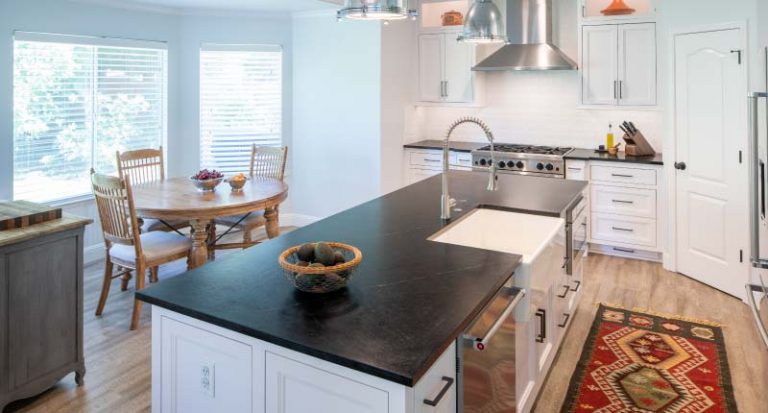soapstone

Soapstone has been a staple material in chemistry labs across the country for decades because of its heat and acid resistance. Glass beakers, Bunsen burners, and hydrochloric acid are no match for soapstone in the chemistry lab, so naturally there is nothing in the kitchen it can’t handle.

“The soapstone countertop has character. It’s not smooth, but it’s not rough either,” Barnieu said. “That’s what I like about soapstone; the more you use it, as it gets older, the patina of the stone gets more and more charming”

Soapstone is versatile and can be incorporated into a wide variety of designs. It has remained a go-to countertop material due to its long-known physical properties and classic old-world aesthetic.

Once you’ve come to terms with soapstone’s softness, you can revel in its strengths. Soapstone is remarkably resistant to staining or damage from acids. The density of the stone makes it practically impervious.

Let’s explore some green stones and illuminate their properties, minerals, and geologic origins.

Soapstone comes in a wide range of color combinations—browns, greens, greys, yellows, black speckles. Each type of soapstone has specific qualities, and each individual piece of stone has its own character.
Soapstone is quite soft, making it a favorite material for the DIY homeowner for use as countertops. It is also non-porous so there is no need to seal it.

